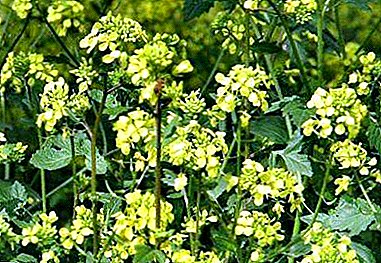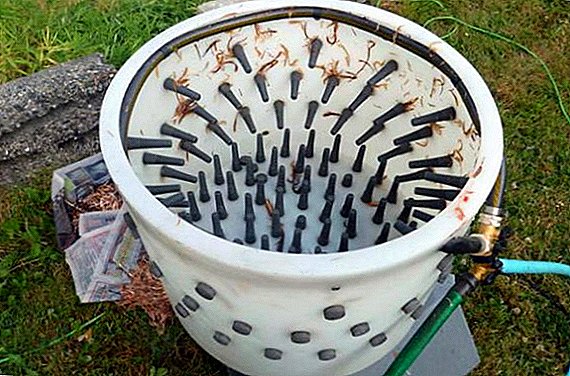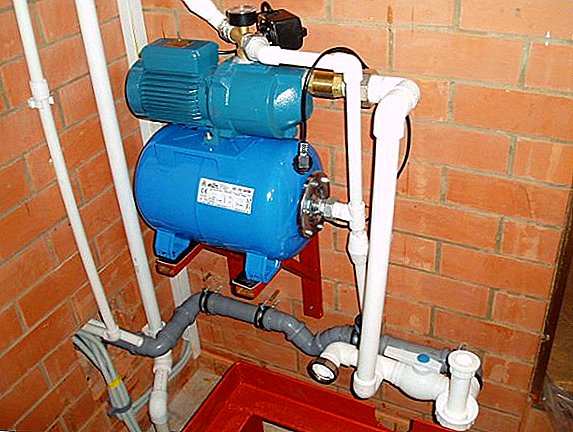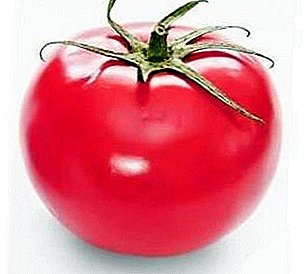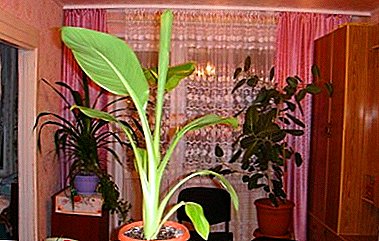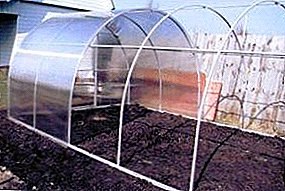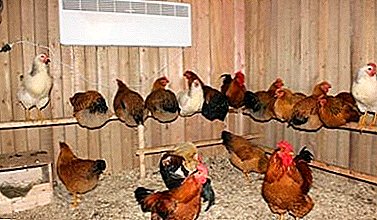
One of the most unpretentious domestic birds are chickens. Home keeping, breeding, feeding and care are simple processes that even a novice farmer can do. A variety of rocks allows you to choose suitable subspecies, adapted for the domestic climate and harsh winters. What nuances you need to know to increase the productivity of chickens?
Where to begin?
 How to raise and raise chickens at home, if you are a novice farmer? First of all, you need to decide on the period of maintenance: only for the summer period or for the whole year. Based on the designated period, you should equip the coop. For summer maintenance is enough light shelter and equipped walking area. In winter, chickens need a heated shed with a good ventilation system.
How to raise and raise chickens at home, if you are a novice farmer? First of all, you need to decide on the period of maintenance: only for the summer period or for the whole year. Based on the designated period, you should equip the coop. For summer maintenance is enough light shelter and equipped walking area. In winter, chickens need a heated shed with a good ventilation system.
The optimal breeding room is a small barn in the backyard area and a courtyard near it. Inside the house should have a pole for the night, as well as feeders and drinkers. Perches should be made from smooth poles at the rate of a quarter of a meter to 1 head.
If you plant birds for the purpose of obtaining eggs, it is necessary to arrange nests (preferably from natural materials - straw). Nests should be located in dark corners.
Conditions of detention and care
Mandatory step - quality equipment house:
- The room should have a shed roof, block (wooden) walls and a clean ceiling.
- It is important to pay attention to the location and size of the windows - dimensions of 25 by 30 cm at a distance of 0.3 m from the floor.
- Lazy poultry should not be large. Their optimal shape is 30 by 30 cm square.
Requirements for paddock paddock - the scope and the presence of a high fence. The final area must be determined at the rate of 0.7 sq.m. on 1 individual. The soil should be sloping, you must have a slope for draining water.
The temperature in the hen house should not fall below zero. The room must meet the standards of sanitation, to be bright, dry and warm (the egg production and the growth of chickens depend on these parameters). It is recommended to install a bath of ash and sand in the hen house for natural cleansing of individuals.
ATTENTION! With cellular content, the bird quickly gains weight and develops. In one cage should not be more than 6 goals. Special requirements are put forward to the arrangement of feeders.
They must have 3 compartments:
- for dry food;
- vitamin supplements;
- wet mash.
What breeds and how to buy?
First, novice farmers should decide for what purpose the cultivation is carried out. In poultry farming, there are 3 main groups of breeds:
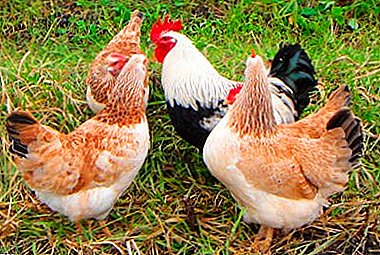 Chickens for meat. They are distinguished by large size and average egg laying. Suitable breeds for breeding - broilers, brahma, Cochinquina.
Chickens for meat. They are distinguished by large size and average egg laying. Suitable breeds for breeding - broilers, brahma, Cochinquina.- Egg. Characteristics - low body weight (2.5 kg), lack of meat. When choosing, pay attention to Leggorn, Russian white, Oryol, Rhode Island.
- Universal (meat-egg). Individuals are distinguished by endurance and unpretentiousness (cottage is suitable for growing). Popular representatives of the subspecies - May Day breed, Kuchinsky, Plymouth, Sussex.
Also distinguish fighting breed and ornamental chickens. Such individuals require warm chicken coops (due to poor plumage) and a balanced feed. To breed representatives of both breeds is economically unprofitable. On private farmsteads almost never occur.
IMPORTANT! It is advisable to buy chickens in bird markets or poultry farms. When choosing it is important to look at the appearance and activity of the chicken.
Rearing chicks
- It is necessary to take the box, cover the bottom with newspapers, put the water bowl and the feeder.
- An electric lamp should be placed on top (adjust the height of the incident light so that the floor is 30 degrees). On the first day, the lighting should be around the clock, then the daylight hours are gradually reduced to 10 hours.
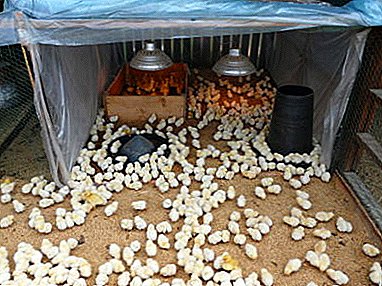 The newspaper should be changed 2 times a day.
The newspaper should be changed 2 times a day.If the chickens are bunched up - they are cold. If you try to keep away from the light - it's hot.
- From 5th day, the temperature should be lowered (end point - 19 degrees).
- From the box, the youngsters are transferred to the litter, then they are kept separately from adult chickens for several months.
Beginner's Guide
For normal development and preservation of productive qualities, it is important to form a balanced diet. Be sure to chickens should receive feed. Its composition contains 65% protein and protein supplements, which is important for maintaining health.
Feeding
Lack of vitamins and minerals affects egg production and leads to poor overall health. In this situation, the chicken can not provide maximum performance. To help the diet to grow healthy individuals and enhance productive properties, you need to saturate it with the following components, like:
 Greens (fresh grass, cabbage leaves, vegetable tops). The product is saturated with vitamins, helps to increase immunity.
Greens (fresh grass, cabbage leaves, vegetable tops). The product is saturated with vitamins, helps to increase immunity.- Seasonal vegetables and boiled potatoes.
- Various grains. In the priority of millet, corn, wheat - is the basis of the diet. The mass fraction of such elements should be 50% of the daily food.
- Bread white varieties. Black bread forms high acidity and provides disruptions to the digestive process.
- Various mineral complexes. The purpose of the introduction of the diet - no problem pecking out their eggs from the hens because of a lack of calcium. Suitable option - shell, chalk.
Breeding
The main requirement for domestic breeding is the presence of a rooster (1 in 14-16 chickens). When selecting a hen it is necessary to consider its health and indicators of egg production. How many eggs to put under the chicken depends on the time of year and the size of the bird. The optimal number is 10-15 pieces. Regardless of the breeding option (natural way or incubator), eggs must be carefully selected:
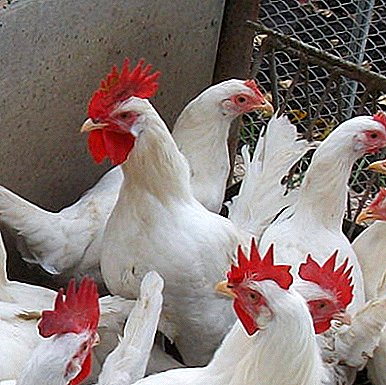 It is forbidden to take eggs with a deformed shape (the chicken will not be able to develop properly);
It is forbidden to take eggs with a deformed shape (the chicken will not be able to develop properly);- it is undesirable to take large or small eggs. The first case is characterized by the presence of 2 yolks, and the second is the small size of the chicks;
- with a deformed shell (roughness, too thin), the eggs are rejected;
- washing eggs is strictly prohibited. This leads to the development of mold and death of the embryo.
When breeding in an incubator, you need to write the date of the bookmark on the shell. Hatching starts from 20 days. Broken shells must be removed immediately. After all the babies were born, the nest is cleaned and covered with straw (sawdust).
Diseases: diagnosis and treatment
Even under good hygienic conditions, contamination can occur through contact with another bird (pigeons) or with rodents. Patients are visible immediately. They are apathetic, sit sluggish, lose their appetite. Sick chicken should be immediately protected from livestock. The list of frequent illnesses includes the following:
- Pasteurellosis or avian cholera. You can diagnose by depression, fever, intense thirst. The feces in chickens are liquid, blood impurities are visible. There are problems with breathing, wheezing. The treatment consists in the introduction of sulfamides.
- Salmonellosis (paratyphoid). The formation of tumors on the eyes, the beginning of frothy diarrhea, swelling of the joints, inflammation of the area around the cloaca are characteristic. Treatment - the introduction of furazolidone (1 tablet per 3 liters of water).
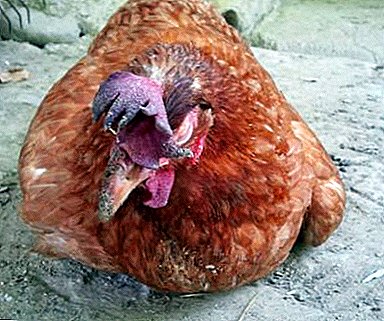 Paralysis or Marek's disease. The color of the iris changes, goiter paralysis occurs, lameness appears. Therapy is not developed. The herd is subject to slaughter.
Paralysis or Marek's disease. The color of the iris changes, goiter paralysis occurs, lameness appears. Therapy is not developed. The herd is subject to slaughter.- Newcastle disease. Signs - high temperature, drowsiness, accumulation of mucus, laying down on its side. There is no cure.
- Gumboro disease. There are no typical clinical symptoms. Can be pecked cloaca, sometimes there is diarrhea. The disease is incurable.
NOTE! In the list of diseases - infection with parasites. This is ascariasis, coccidosis, infection with lice. Treatment picks up the vet.
Other problems
Among the frequent questions is why the birds peck at each other. There can be several explanations:
- the hen keeps the hens away from the nest;
- the young individuals were given young stock;
- the house is too tight.
Any of the presented phenomena is temporary. Solved by expanding the size of the chicken coop (or selective slaughter). The hen needs to be removed in a separate cage.
Do chickens molting? Yes, birds update their plumage in late autumn or early winter. During this period, individuals look sick, but molting is safe for health.
What caused a bad appetite? In the list of causes of illness, stress or temperature drops.
Breeding chickens at home is an interesting and cost-effective process. Adhering to the basic rules of maintenance and care, you can grow healthy offspring and provide yourself with healthy meat and eggs all year round.


 Chickens for meat. They are distinguished by large size and average egg laying. Suitable breeds for breeding - broilers, brahma, Cochinquina.
Chickens for meat. They are distinguished by large size and average egg laying. Suitable breeds for breeding - broilers, brahma, Cochinquina. The newspaper should be changed 2 times a day.
The newspaper should be changed 2 times a day. Greens (fresh grass, cabbage leaves, vegetable tops). The product is saturated with vitamins, helps to increase immunity.
Greens (fresh grass, cabbage leaves, vegetable tops). The product is saturated with vitamins, helps to increase immunity. It is forbidden to take eggs with a deformed shape (the chicken will not be able to develop properly);
It is forbidden to take eggs with a deformed shape (the chicken will not be able to develop properly); Paralysis or Marek's disease. The color of the iris changes, goiter paralysis occurs, lameness appears. Therapy is not developed. The herd is subject to slaughter.
Paralysis or Marek's disease. The color of the iris changes, goiter paralysis occurs, lameness appears. Therapy is not developed. The herd is subject to slaughter.